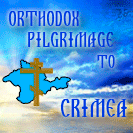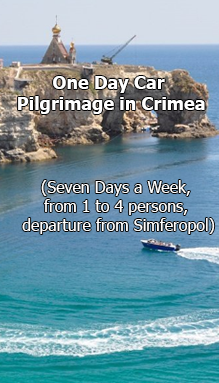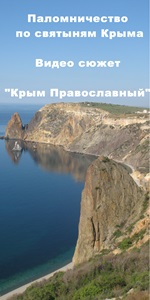Crimean Saints
Saint Luke, Archbishop of Simferopol and of the Crimea
Archbishop Luka (Luke, Russian: Архиепископ Лука, born Valentin Felixovich Voyno-Yasenetsky, Russian: Валентин Феликсович Войно-Ясенецкий; April 27/May 9, 1877 in Kerch – June 11, 1961, Simferopol) was an outstanding surgeon, the founder of purulent surgery, a spiritual writer, a bishop of Russian Orthodox Church, and an archbishop of Simferopol and of the Crimea since May 1946. He was a laureate of Stalin Prize in medicine in 1946.
His most important work in medicine is Purulent Surgery Essays, 1934. This is still a reference book and a manual for surgeons. As a noticeable religious figure, he was subjected to political repressions and spent 11 years in internal exile. Luka was born into a family of faithful parents but, according to his memoirs, did not receive a religious upbringing from his family. He apprehended the Christ's teaching by assiduous reading of the New Testament.
He was canonized by the Russian Orthodox Church on May 25, 1996. His feast day is May 29/June 11 (Julian [Old] Calendar/Gregorian [New] Calendar). On March 17, 1996, St. Luke's remains were disinterred, with many thousands of people attending the ceremony. It is said that an indescribable aroma arose from his relics, while his heart was discovered incorrupt, a testament to the great love he bore towards Christ and his fellow men. Three days later on March 20, 1996, his relics were transferred to the Church of the Holy Trinity.
His relics which continue to work countless miracles are found in the Church of the Holy Trinity in Simferopol and in many other Orthodox churches around the world. He is beloved and celebrated worldwide. In Greece portions of relics of Saint Luke are found in Sagmata monastery, Dovra monastery and few other churches.
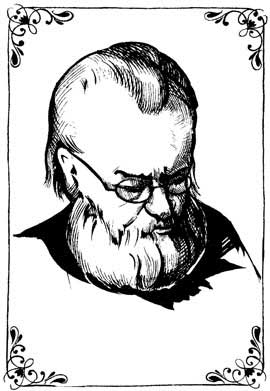
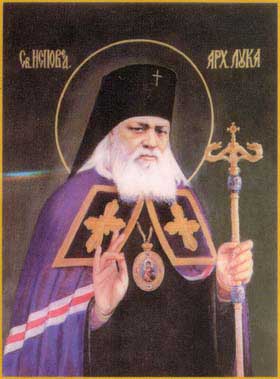
Gurias (Karpov) of Simferopol
Gury (Karpov), also Gurias of Tavryisk, was Archbishop of Tauris and Simferopol during the latter half of the nineteenth century. He was a scholar and missionary in China, leading the fourteenth Russian mission in Beijing. He was glorified by the Ukrainian Orthodox Church in 2008. He is remembered on March 17, the day of his repose.
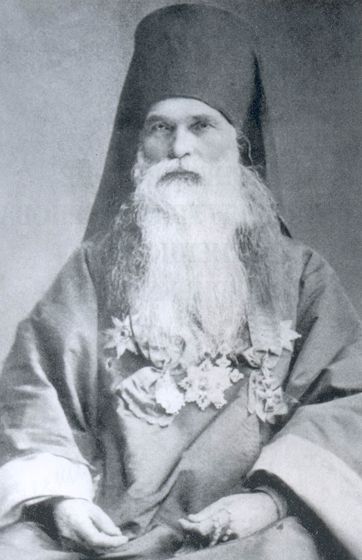
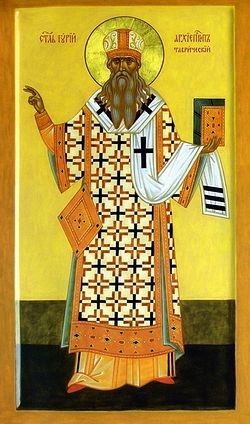
Grigory Platonovich Karpov was born in 1814 in the town of Saratov, Russia. His father was a priest. He attended the Saratov Theological Seminary, graduating in 1837 after which he entered the St. Petersburg Theological Academy. While attending the academy he was tonsured a monk and received the name Gury on July 12, 1838. The following month on August 4, he was ordained a hierodeacon, followed a year later on November 20], 1829 as a hieromonk. He graduated from the St. Petersburg academy in 1839 with a Candidate degree in theology. After his graduation, Fr. Gury was appointed, on December 23, 1839, a member of the Russian Orthodox Mission in Beijing. This appointment by a decree of the Holy Synod started a twenty year relationship with the mission in China, a relationship that result in his translation into Chinese of the Gospels, service books, and other liturgical books. In 1851, he was reassigned back to Russia.
On February 21, 1851, Fr. Gury was elevated to the rank of archimandrite. On October 12, 1851, he was appointed Inspector of the Alexander Religious School. On August 17, 1855, Arch. Gury received his Master of Theology degree. On August 25, 1856, he returned to Beijing, this time as the leader of the fourteenth mission in China. During this period of service in Beijing, Arch. Gury continued his efforts of translating the theological works of the Orthodox Church into Chinese and established a scholarly foundation for his successors. He had mastered the Chinese language, becoming proficient in speaking as well as writing. Among his works were the translation of New Testament in two volumes, a Psalter, and volumes dealing with Orthodox services and church history. In addition to his scholarly works, he put his hands to building traditional Russian stoves, to ward off the chill of the Beijing weather, and organized the Albanzinians in the mission compound into the Beijing choir. His service in China ended in 1864.
On September 13, 1865, Arch. Gury arrived at his next assignment as priest-in-charge of Siminov Monastery in Moscow, with Arch. Pallady (Kafarov) replacing him in Beijing. On January 26, 1866, he became the priest-in-charge of the Russian embassy church in Rome, Italy. By mid year on July 5, 1866, Arch. Gury was consecrated as Bishop of Cheboksary, a vicar of the Diocese of Kazan.
On December 15, 1867, Bp. Gury was installed as the Bishop of Tauris and Simferopol in South Russia. As the ruling bishop, he devoted himself to his eparchy. He strived to improve the education of his clergy, opening a theological seminary and two religious schools, one for men and the other for women. As a result of his efforts in his diocese, Bp. Gury, in 1876, became an honorary member of the Ecclesiastical-Archeological Society and of the Kiev Theological Academy.
On April 21, 1881, Bp. Gury was elevated to the rank of archbishop. On March 17, 1882, Abp. Gurt reposed in Simferopol, having established himself to be among the most memorable bishops of the Russian Orthodox Church.
On April 18, 2008, the Holy Synod of the Ukrainian Orthodox Church, under the chairmanship His Beatitude Vladimir, Metropolitan of Kiev and All Ukraine, passed a decision adding the name of Archbishop Gury (Karpov) of Tauris and Simferopol to the list of saints of the local Orthodox Church. Now his relics are found in the St. Alexander Nevsky Cathedral in Simferopol.
APOSTLE ANDREW, THE HOLY AND ALL-PRAISED FIRST-CALLED
Commemorated on November 30/December 13
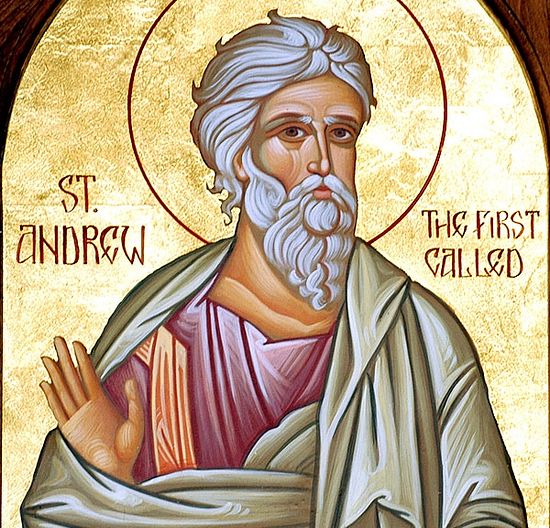
The Holy Apostle Andrew the First-Called was the first of the Apostles to follow Christ, and he later brought his own brother, the holy Apostle Peter, to Christ (John 1:35-42). The future apostle was from Bethsaida, and from his youth he turned with all his soul to God. He did not enter into marriage, and he worked with his brother as a fisherman. When the holy Prophet, Forerunner and Baptist John began to preach, Saint Andrew became his closest disciple. Saint John the Baptist himself sent to Christ his own two disciples, the future Apostles Andrew and John the Theologian, declaring Christ to be the Lamb of God.
After the Descent of the Holy Spirit upon the Apostles, Saint Andrew went to the Eastern lands preaching the Word of God. He went through Asia Minor, Thrace, Macedonia, he reached the River Danube, went along the coast of the Black Sea, through Crimea, the Black Sea region and along the River Dniepr he climbed to the place where the city of Kiev now stands.
He stopped overnight on the hills of Kiev. Rising in the morning, he said to those disciples that were with him: “See these hills? Upon these hills shall shine forth the beneficence of God, and there will be a great city here, and God shall raise up many churches.” The apostle went up around the hills, blessed them and set up a cross. Having prayed, he went up even further along the Dniepr and reached a settlement of the Slavs, where Novgorod was built. From here the apostle went through the land of the Varangians towards Rome for preaching, and again he returned to Thrace, where in the small village of Byzantium, the future Constantinople, he founded the Church of Christ. The name of the holy Apostle Andrew links the mother, the Church of Constantinople, with her daughter, the Russian Church.
On his journeys the First-Called Apostle endured many sufferings and torments from pagans: they cast him out of their cities and they beat him. In Sinope they pelted him with stones, but remaining unharmed, the persistant disciple of Christ continued to preach to people about the Savior. Through the prayers of the Apostle, the Lord worked miracles. By the labors of the holy Apostle Andrew, Christian Churches were established, for which he provided bishops and clergy. The final city to which the Apostle came was the city of Patra, where he was destined to suffer martyrdom.
The Lord worked many miracles through His disciple in Patra. The infirm were made whole, and the blind received their sight. Through the prayers of the Apostle, the illustrious citizen Sosios recovered from serious illness; he healed Maximilla, wife of the governor of Patra, and his brother Stratokles. The miracles accomplished by the Apostle and his fiery speech enlightened almost all the citizens of the city of Patra with the true Faith.
Few pagans remained at Patra, but among them was the prefect of the city, Aegeatos. The Apostle Andrew repeatedly turned to him with the words of the Gospel. But even the miracles of the Apostle did not convince Aegeatos. The holy Apostle with love and humility appealed to his soul, striving to reveal to him the Christian mystery of life eternal, through the wonderworking power of the Holy Cross of the Lord. The angry Aegeatos gave orders to crucify the apostle. The pagan thought he might undo Saint Andrew’s preaching if he were to put him to death on the cross.
Saint Andrew the First-Called accepted the decision of the prefect with joy and with prayer to the Lord, and went willingly to the place of execution. In order to prolong the suffering of the saint, Aegeatos gave orders not to nail the saint’s hands and feet, but to tie them to the cross. For two days the apostle taught the citizens who gathered about. The people, in listening to him, with all their souls pitied him and tried to take Saint Andrew down from the cross. Fearing a riot of the people, Aegeatos gave orders to stop the execution. But the holy apostle began to pray that the Lord would grant him death on the cross. Just as the soldiers tried to take hold of the Apostle Andrew, they lost control of their hands. The crucified apostle, having given glory to God, said: “Lord Jesus Christ, receive my spirit.” Then a blazing ray of divine light illumined the cross and the martyr crucified upon it. When the light faded, the holy Apostle Andrew had already given up his holy soul to the Lord. Maximilla, the wife of the prefect, had the body of the saint taken down from the cross, and buried him with honor.
A few centuries later, under the emperor Constantine the Great, the relics of the holy Apostle Andrew were solemnly transferred to Constantinople and placed in the church of the Holy Apostles beside the relics of the holy Evangelist Luke and Saint Paul’s disciple Saint Timothy.
HIEROMARTYR CLEMENT THE POPE OF ROME
Commemorated on November 25
The Hieromartyr Clement, Pope of Rome, was born at Rome into a rich and illustrious family. Separated from his parents from childhood by force of circumstances, Clement was raised by strangers. Living in Rome, the youth received a fine education, he was surrounded by luxury, and had access to the imperial court. But these comforts brought him no joy, and pagan wisdom failed to attract him. He began to ponder the meaning of life.
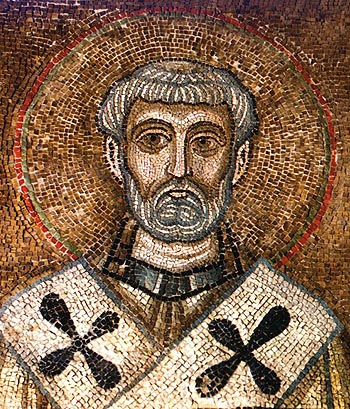
When the news of Christ and His teaching began to reach the capital, Saint Clement left his home and estate and went to the lands where the Apostles were preaching. At Alexandria Saint Clement met the holy Apostle Barnabas, listening to his words with deep attention, and perceiving the power and truth of the Word of God. Arriving in Palestine, Saint Clement was baptized by the holy Apostle Peter and became his zealous disciple and constant companion, sharing his toil and sufferings with him. Shortly before his own sufferings and death, Saint Peter consecrated Saint Clement as Bishop of Rome. After the death of the Apostle Peter, Saint Linus (67-79) was the next Bishop of Rome, succeeded by Saint Anacletus (79-91), and then Saint Clement (92-101).
The virtuous life, charitable works and prayerful activity of Saint Clement converted many to Christ. He once baptized 424 people on the day of Pascha. Among the baptized were people of all social classes: slaves, officials, and even members of the imperial family.
The pagans, seeing the success of his apostolic preaching, denounced Saint Clement to the emperor Trajan (98-117), accusing the saint of insulting the pagan gods. The emperor banished Saint Clement from the capital, sending him to the Crimea, to work at a stone quarry near the city of Cherson. Many of the saint’s disciples followed after him voluntarily, preferring to go into exile rather than live without their spiritual Father.
When he arrived at the place of exile, Saint Clement found many Christian believers there, sentenced to labor under harsh conditions amidst a scarcity of water. He prayed together with the condemned, and the Lord appeared to him in the form of a lamb and revealed the location of a spring, from which gushed forth a veritable river of water. This miracle attracted a multitude of people to Saint Clement. Hearing the zealous preacher, hundreds of pagans were converted to Christ. Each day 500 or more men were baptized. And there in the stone quarry, a church was built, in which he served as priest.
The apostolic activity of the saint aroused the wrath of the emperor Trajan, and he ordered that Saint Clement be drowned. They threw the martyr into the sea with an anchor tied to his neck. This occurred in the year 101.
The saint’s faithful disciples Cornelius and Fibius asked the people to pray that the Lord would permit them to see the martyr’s body. The sea drew back a distance of three miles from the shore and the people walked out on the seabed until they found a marble cave shaped like a church. There they found the incorrupt body of their archpastor in this “Angelic Church” formed by God. After this, each year on the anniversary of Saint Clement’s martyric death the sea receded, and for seven days Christians were able to venerate his holy relics.
During the reign of the Byzantine Emperor Nicephorus (802-811), by divine providence, the sea failed to withdraw, and the relics of Saint Clement became inaccessible for fifty years. In the time of the emperor Michael and his mother Theodora (855-867), Saints Cyril and Methodius visited Cherson. When they learned of the concealed relics of Saint Clement, they asked Bishop George of Cherson to pray that the Lord would show them the relics of the hieromartyr.
Saints Cyril and Methodius walked along the shore in procession with the clergy who came with them from Constantinople. Through the fervent prayers of everyone gathered there, the holy relics of Saint Clement miraculously appeared on the surface of the sea at midnight. They solemnly took them to the Church of the Holy Apostles at Constantinople. A portion of the relics were then brought to Rome by Saints Cyril and Methodius, but a large portion of the relics was later brought to Kiev by the holy Prince Vladimir (July 15) and placed in the Desyatin-Tithe church, together with the relics of Saint Fibius, where a chapel dedicated to Saint Clement had been built. The hieromartyr Clement is widely venerated in Russia. From ancient times, many churches have been dedicated to him.
Saint Clement, who belongs to the Apostolic Fathers, has left to us a spiritual legacy (two Epistles to the Corinthians) the first written examples of Christian teaching after the writings of the holy Apostles.
By the materials of the website of the Russian Orthodox Church in America








